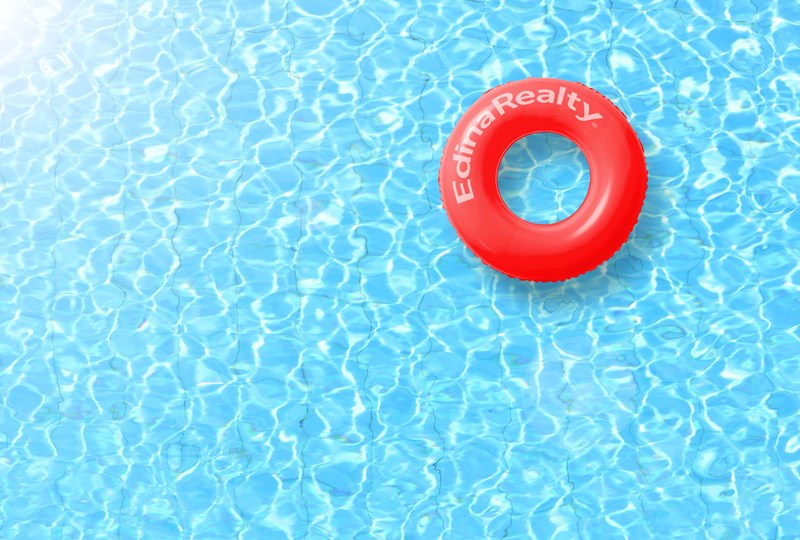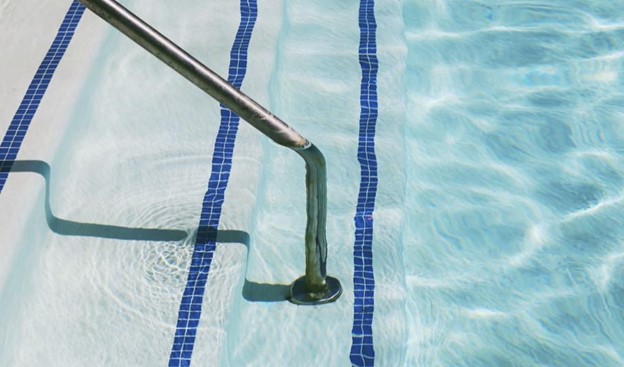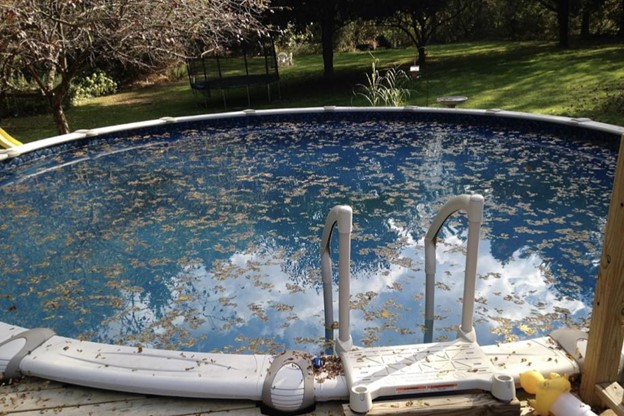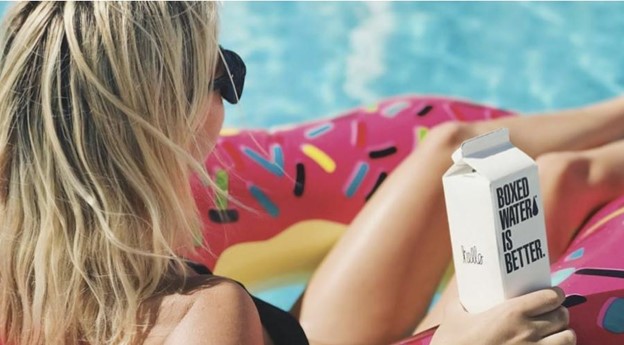
Key insights:
- Having your own backyard pool is a great way to experience a Midwest summer, but planning your backyard oasis is key.
- Above-ground and in-ground pools vary in many ways. Consider the costs and aesthetics of each.
- In addition to the pool installation cost, you’ll want to factor in swimming accessories, maintenance fees, insurance and more.
Homeowners in Minnesota and western Wisconsin are fortunate to experience all four seasons throughout the year, and our warm summer heat may have you considering adding a swimming pool to your backyard. Here’s what to know when deciding whether a pool addition makes sense for you.

Is a pool a good investment? It depends on your answers to these questions
The question of whether a pool is worth it for homeowners requires a more involved answer than a simple yes or no. To determine if a pool is a smart investment for you, you’ll want to ask yourself:
- Would I get an in-ground or above-ground pool?
- How much does it cost to install a pool?
- Can I afford the possible increased insurance bill for a pool?
- How much maintenance will I have to do? How much does pool maintenance cost?
- How much will I use my pool?
- Can my property accommodate a pool?
- What is the return on investment for a swimming pool?

1. In-ground vs. above-ground: What type of pool should you get?
After making the decision to build a pool in your backyard, you’ll want to ask yourself: What kind of swimming pool should we get? Although there is no correct answer to this question, there are two main types of pools, each with its own set of benefits and drawbacks.
In-ground pools
Built into the ground, these pools are typically made of concrete, vinyl or fiberglass. In-ground pools are a popular option for homeowners due to their sleek and attractive appearance. Here are additional considerations for installing an in-ground pool.
Pros of in-ground pools:
- There are more varieties and features available.
- They are less likely to be damaged over time.
- In-ground pools generally last longer.
Cons of in-ground pools:
- Usually, they are more expensive to install and maintain.
- When needed, repairs can be costly and more labor-intensive.
- They may require additional safety considerations.
- Not all soil types will easily accommodate installation.
Above-ground pools
These pools are made of steel or polymer walls that stand above the ground. Sometimes, these pools are surrounded by decking, which creates the ideal backyard setup for swimmers and sunbathers alike.
Pros of above-ground pools:
- They are easy and quick to install.
- They are typically less expensive to install and repair.
- They require significantly less maintenance than in-ground pools.
Cons of above-ground pools:
- They are limited in size and shape.
- Some consider them to be outdated or unsightly.
- They have a shorter lifespan.

2. Affordability: How much does a pool cost?
Backyard swimming pools can vary greatly in style, and pool prices fluctuate depending on how homeowners customize their designs. Here are some of the options you’ll have when determining your pool aesthetics, along with estimated in-ground and above-ground pool costs.
Common pool-related costs:
- Size (in-ground): $80 to $250 per square foot; $25,000 to $100,000 average total cost
- Size (above-ground): $800 to $4,500 pool only; $1,600 to $7,500 average total installed cost
- Materials (in-ground): Prices start at $30,000 for fiberglass, $25,000 for vinyl and $50,000 for concrete
- Fence: $5,000 to $15,000
- Pool heater: $1,600 to $5,200
- Slides: $1,000 to $4,000
- Diving boards: $300 to $700
Last, the shape of the pool is customizable, but standard rectangle or oval designs (in-ground) tend to be the most cost-effective.
Regardless of what you choose, an in-ground pool will typically cost more ($25,000 to $100,000) than an above-ground pool ($1,600 to $7,500). For this reason, some pool experts recommend starting with an above-ground or temporary pool. From there, homeowners can determine if they want to invest in a more expensive in-ground pool.
Aside from the initial purchase and installation, pool owners need to budget for features that are necessary for a safe pool, as well as fun features they may want to add.
Extra pool costs include:
- Fences
- Pool covers
- Pool lighting
- Professional cleaning and maintenance fees
- Filters, test strips, chlorine and pool chemicals
- Poolside furniture, toys, rafts and accessories
- Decks or patios
3. Pool insurance: Are you prepared for an increased insurance rate?
Swimming pools come with a set of inherent risks and potential liabilities. Therefore, it’s important to make sure you have proper insurance coverage before adding a pool. To protect yourself, pool guests and property, discuss your pool with your homeowner’s insurance representative.*
Adding a pool affects your homeowner's insurance under both the property and liability areas of your homeowner’s insurance policy.
Property coverage:
- In-ground pools are usually classified as “Other Structures,” like a detached garage or shed.
- Above-ground pools may be considered personal property, especially if they can be removed.
- These classifications affect how much coverage you have and under which part of your policy it falls.
Liability coverage:
Pools are considered a liability hazard, especially for children or guests. If someone gets hurt, you could be held legally responsible.
- Most standard policies include personal liability coverage, but with a pool, it’s recommended to increase your limits to at least $300,000-$500,000.
- You might also consider an umbrella policy for additional liability protection.
- Some insurers may drop or deny coverage if your pool has a diving board or slide due to the high risk of serious injury they pose.
Safety requirements:
- Insurers may require fences, gates or pool covers to reduce the chance of accidents and claims.

4. Maintenance: How much work are you willing to put in?
After installing a pool, maintenance is critical. Keeping it clean will help extend the longevity of the pool, and it will make the environment even more enjoyable for your family and guests.
Keep in mind that a properly maintained pool requires the investment of time or money. In other words, you might have to spend a few hours in the backyard tending to your pool, or you may opt to hire a pool servicing company.
Typical pool maintenance involves:
- Using a net to collect leaves and other debris from the water.
- Scrubbing pool walls, steps and ladders.
- Cleaning around the pool, including the pool cover.
- Running the pool pump.
- Checking and cleaning the pool filter.
- Checking and adjusting the pool’s chemical and pH levels.
- Shocking the pool.

5. Lifestyle: How much will you really use your pool?
The only way to determine how much you’ll use your pool is to consider your family’s lifestyle.
Before investing, ask yourself these specific questions:
- Would you exercise or spend regular time in your pool?
- Do you enjoy entertaining guests outside?
- How much time do you spend at your home in the summer?
- Do you have kids or other guests who would swim in the pool regularly?

6. Your property: Can you accommodate a pool?
To answer this question, you must consider the size and layout of your yard. If the yard is big enough to accommodate a pool, identify obstacles like trees, boulders or sloped terrain. Once the yard and landscaping can accommodate the pool, you can get into the nitty-gritty details.
In many neighborhoods, it’s necessary to maintain specific backyard pool legalities. For example, building permits are likely required before construction begins, along with additional permits for plumbing, electrical and mechanical features. Local safety requirements and restrictions could also be in place. Check with your city to better understand the pool regulations in your area.
Finally, if your home is located in a community with a homeowner’s association, the HOA may have specific requirements for pool approval. Check with your HOA before installing your pool.

7. Return on investment: How much value does a pool add?
When determining whether or not a pool will add to the resale value of your home, you have to consider our climate. In the Midwest, pools can only be utilized for a fraction of the year, and some buyers may not be motivated to maintain and insure a pool they can’t use year-round.
On the other hand, plenty of homebuyers will think a backyard swimming pool is worth it. Not only will they be able to enjoy a dip in the water whenever they want, but they can also entertain guests, exercise and relax poolside in the comfort of their own property.
There’s no easy way to calculate a swimming pool’s return on investment, but you can help your home’s pool shine when selling. Here are home staging tips for pool homeowners.

Let’s dive in!
Are you ready to enjoy a convenient swim after work or a relaxing weekend hangout by the pool? If so, start your search for a home with a pool here.
No matter where you are in your journey, reach out to Edina Realty or one of our agents for advice and insights on how and when to buy or sell a home with a pool.
*Edina Realty Insurance is an affiliate of Edina Realty. See Affiliated Business Arrangement Disclosure Statement









 ©2025 Prosperity Home Mortgage LLC®. (877) 275-1762. 3060 Williams Drive, Suite 600, Fairfax, VA 22031. All first mortgage products are provided by Prosperity Home Mortgage, LLC®. Not all mortgage products may be available in all areas. Not all borrowers will qualify. NMLS ID #75164 (For licensing information go to: NMLS Consumer Access at
©2025 Prosperity Home Mortgage LLC®. (877) 275-1762. 3060 Williams Drive, Suite 600, Fairfax, VA 22031. All first mortgage products are provided by Prosperity Home Mortgage, LLC®. Not all mortgage products may be available in all areas. Not all borrowers will qualify. NMLS ID #75164 (For licensing information go to: NMLS Consumer Access at